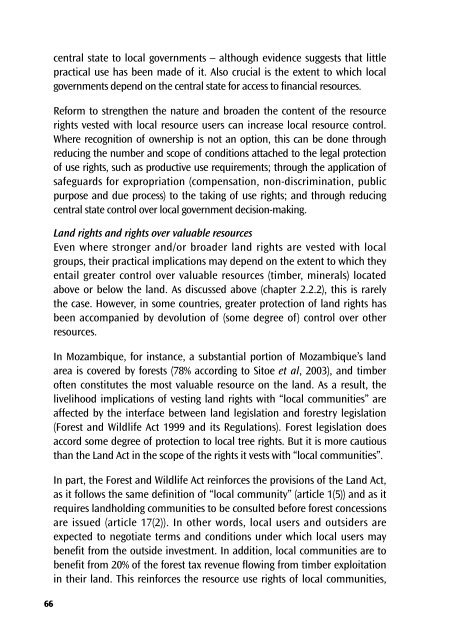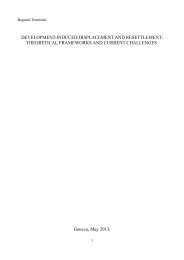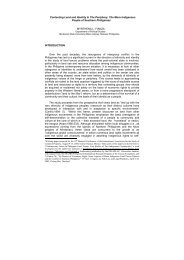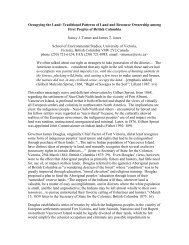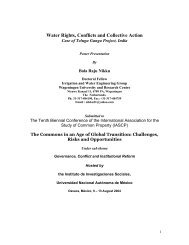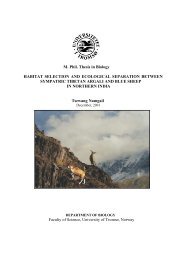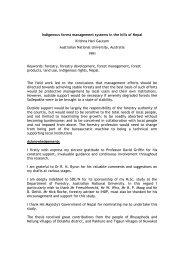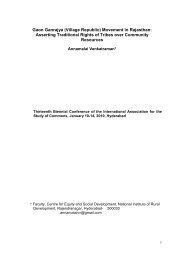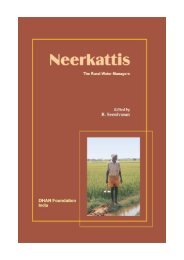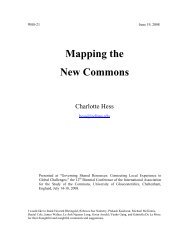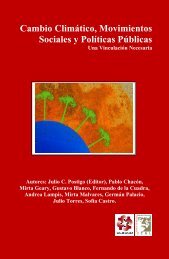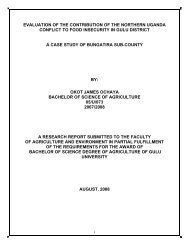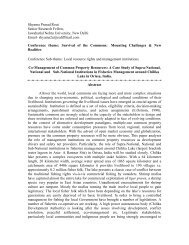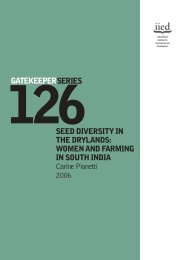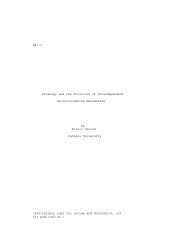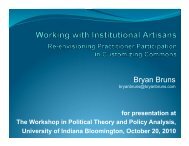Legal empowerment for local resource control
Legal empowerment for local resource control
Legal empowerment for local resource control
Create successful ePaper yourself
Turn your PDF publications into a flip-book with our unique Google optimized e-Paper software.
66<br />
central state to <strong>local</strong> governments – although evidence suggests that little<br />
practical use has been made of it. Also crucial is the extent to which <strong>local</strong><br />
governments depend on the central state <strong>for</strong> access to financial <strong>resource</strong>s.<br />
Re<strong>for</strong>m to strengthen the nature and broaden the content of the <strong>resource</strong><br />
rights vested with <strong>local</strong> <strong>resource</strong> users can increase <strong>local</strong> <strong>resource</strong> <strong>control</strong>.<br />
Where recognition of ownership is not an option, this can be done through<br />
reducing the number and scope of conditions attached to the legal protection<br />
of use rights, such as productive use requirements; through the application of<br />
safeguards <strong>for</strong> expropriation (compensation, non-discrimination, public<br />
purpose and due process) to the taking of use rights; and through reducing<br />
central state <strong>control</strong> over <strong>local</strong> government decision-making.<br />
Land rights and rights over valuable <strong>resource</strong>s<br />
Even where stronger and/or broader land rights are vested with <strong>local</strong><br />
groups, their practical implications may depend on the extent to which they<br />
entail greater <strong>control</strong> over valuable <strong>resource</strong>s (timber, minerals) located<br />
above or below the land. As discussed above (chapter 2.2.2), this is rarely<br />
the case. However, in some countries, greater protection of land rights has<br />
been accompanied by devolution of (some degree of) <strong>control</strong> over other<br />
<strong>resource</strong>s.<br />
In Mozambique, <strong>for</strong> instance, a substantial portion of Mozambique’s land<br />
area is covered by <strong>for</strong>ests (78% according to Sitoe et al, 2003), and timber<br />
often constitutes the most valuable <strong>resource</strong> on the land. As a result, the<br />
livelihood implications of vesting land rights with “<strong>local</strong> communities” are<br />
affected by the interface between land legislation and <strong>for</strong>estry legislation<br />
(Forest and Wildlife Act 1999 and its Regulations). Forest legislation does<br />
accord some degree of protection to <strong>local</strong> tree rights. But it is more cautious<br />
than the Land Act in the scope of the rights it vests with “<strong>local</strong> communities”.<br />
In part, the Forest and Wildlife Act rein<strong>for</strong>ces the provisions of the Land Act,<br />
as it follows the same definition of “<strong>local</strong> community” (article 1(5)) and as it<br />
requires landholding communities to be consulted be<strong>for</strong>e <strong>for</strong>est concessions<br />
are issued (article 17(2)). In other words, <strong>local</strong> users and outsiders are<br />
expected to negotiate terms and conditions under which <strong>local</strong> users may<br />
benefit from the outside investment. In addition, <strong>local</strong> communities are to<br />
benefit from 20% of the <strong>for</strong>est tax revenue flowing from timber exploitation<br />
in their land. This rein<strong>for</strong>ces the <strong>resource</strong> use rights of <strong>local</strong> communities,


